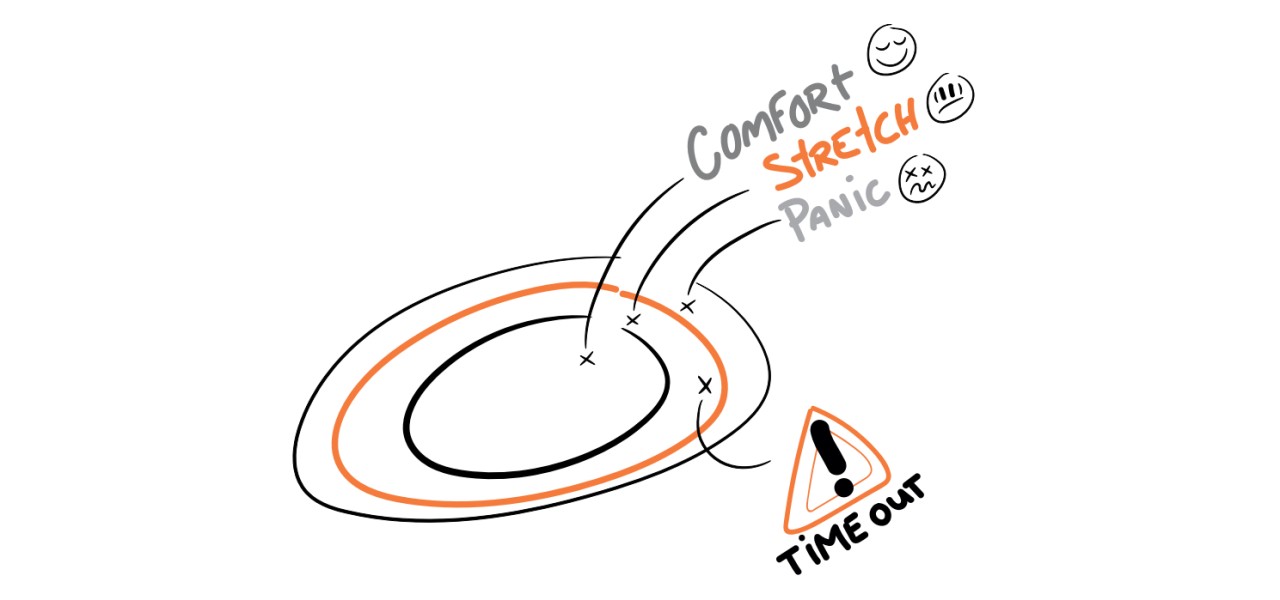The comfort zone is the zone in which a person feels comfortable. There are no feelings of fear or uncomfortable feelings. You feel mentally and physically safe, healthy, you feel at home and comfortable. Everything is and feels familiar, there is no challenge in this zone to have to or to learn something. There is also little reflection on one’s own behavior in the comfort zone and few opportunities to learn. You are not challenged in this zone either. Things are as they are, are not challenged or questioned.
The comfort zone has a number of challenges related to working mentally and physically safely and healthily. Because of the lack of a sense of “fear”, people in the comfort zone tend to become complacent. They are so experienced in situations that they have almost “forgotten” why there is danger or risk in the work they do. And more and more act accordingly. It is not without reason that incidents and accidents often occur with very inexperienced employees or with very experienced employees who have been doing the work satisfactorily for many years.
The stretching zone is the zone between the comfort zone and the panic zone. In this zone, situations and activities feel “strange” and unknown. They are new or almost new. In this zone ‘learning’ can arise. It is the zone where you can discover and expand your possibilities, where you can gain experience and learn from it, where you can work on personal development and explore and discover your limits. In the stretching zone you still have so much control over your behavior that you can choose whether or not to learn and that if you notice that things feel too uncomfortable, you can return to the comfort zone. Personal development comes about by being “controlled” in the stretching zone and learning and discovering there. By doing this regularly and “learning”, the comfort zone is eventually enlarged. The things learned become so known and you are experienced in them in such a way that it entails an addition and enlargement of your comfort zone.
Related to mentally and physically safe and healthy work, the stretching zone is the zone where in principle the most safe and healthy work can be done. That is, if some experience has already been gained with the work, rules and procedures are clear, it is clear where the risks are located in the work and how they should be dealt with. When someone is first exposed to new, risky work, the advantage is that the person will experience some “fear” of the unknown and will be sharper and learn faster. This must then be taught properly. By guiding in ‘practicing’ with the new work and learning with it, someone can be taught a sharpness in safety and health in the workplace.
In the panic zone, the challenges have become so great that we feel uncomfortable, anxious and overwhelmed. We experience (increasing levels of) stress, fear and an unbridgeable challenge. This triggers primary reactions such as fleeing, fighting and freezing and that is where the most energy is given. If someone is in the panic zone for too long, it has mental and physical consequences. The consequences may even be that one decides not to want to explore anymore and return to the comfort zone and stay there. Even a trip to the stretching zone is already too much to ask …
If we relate the panic zone to healthy and safe work, it should be clear that this zone seriously endangers the health (mental and physical) of employees. And at the same time the safety of the employee and his or her environment. In the panic zone there is no good control over one’s own thinking and primary reactions get the upper hand. This can lead to dangerous situations and decisions with potentially serious consequences.


